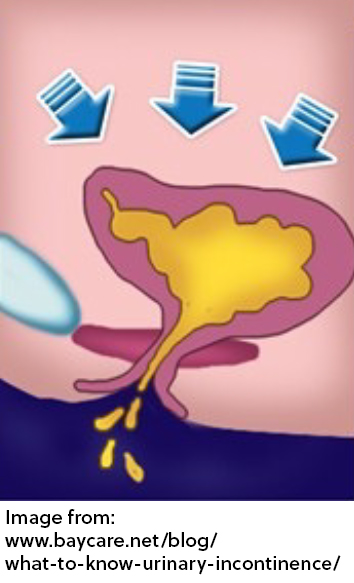SUI and Athletes
Stress Urinary Incontinence (SUI) is defined as a complaint of involuntary loss of urine upon effort or physical exertion (eg, sport) or on sneezing and coughing and is often attributed to Pelvic Floor Muscle Dysfunction (PFMD). More and more, we are seeing that SUI as a major cause of reduced performance in female athletes. Why is this happening and how can we treat it?
In the general population, there are several risk factors contributing to SUI and PFMD including vaginal delivery, obesity, older age and there is level 1 evidence that pelvic floor muscle training should be the first line of treatment.1. Read our article ‘Treating Incontinence, Empowering Women’ for more information.
In the female athlete, many of these risk factors do not apply, and in fact, many athletes experiencing SUI are nulliparous. Currently, there are no randomised controlled trials looking at the effect of any treatment for SUI and PFMD in the female athlete population.
What do we know?
The main findings from current research might surprise you:
- The mean prevalence of UI in the female athlete is almost 50%.
- Majority (50-92%) of the athletes have never discussed the problem with anyone
- They are too embarrassed to discuss it.
- Unaware of treatment options.
- Don’t know who to tell and have never been asked!
- Many athletes report that UI affects their life negatively, and they consider UI a social or hygienic problem.
- 73.3% of athletes are unfamiliar with UI and the function of the PFM.2
- Two studies showed that 80-91% had not received any pelvic floor education or had never heard of PFM exercises.3,4
- Athletes are more likely to experience SUI with higher frequency and longer duration of training.
- 1 in 2 women stop performing an exercise secondary to pelvic floor symptoms.
- 1 in 3 nulliparous or younger women (18-25 yoa) stopped a form of exercise due to UI.
Theories regarding why SUI occurs in athletes
 SUI occurs when the intravesical pressure is higher than the urethral closure pressure during physical exertion.
SUI occurs when the intravesical pressure is higher than the urethral closure pressure during physical exertion. Current theories looking at poor urethral closure pressure:
- Increased tone of PFM results in a reduced capacity to generate urethral closure:
- The implication of this is that athletes need to relax / reduce the PFM tone prior to strength training.
- This is different from weak PFM or incorrect timing of a PFM contraction as potentially once thought, however, this still needs to be addressed if found on assessment.5
- For more information on increase tone of the PFM click here.
- Deficiency in the urethral sphincters.
- Increase in urethral/fascial hypermobility.
Current theories looking at factors contributing to an increase in intravesical pressure:
- High intra-abdominal pressure (IAP) generated by the thorax above:
- Many athletes need to generate high IAP to create power and speed for performance eg abdominal bracing. It is hypothesised that the IAP is too high for the PFM to compensate.
- If we can’t change the forces or IAP, perhaps the use of a pessary may provide the additional urethral support required for the athlete to continue performing their chosen sport.5
- Poor force absorption through the foot and lower limb
- This potentially results in the PFM needing to absorb the ground reaction forces generated with foot strike/landing in high impact activities such as running and jumping.
Lifestyle factors and compensatory strategies that should be considered:
- Eating disorder
- Hypoestrogenism and hormonal issues
- Caffeine and alcohol intake
- Constipation
- Void before training/competition
What can you do?
There is still so much that we do not know when it comes to SUI in the female athlete and further research is required. As health professionals, we are well placed to be screening athletes. With the rise in women participating in professional sport, such as AFLW, SUI will become more prevalent. Therefore, asking athletes directly whether they experience SUI or any pelvic floor symptoms is important.
In addition to asking directly, you could use this quick and easy tool, the Pelvic Floor Bother Questionnaire, which patients can fill in. If they are experiencing any symptoms then a referral to a Pelvic Health Physiotherapist and a Urogynaecologist should be made.
Women should not be compromising their participation in sport or change their level of training due to UI. At WMHP we pride ourselves on restoring pelvic health to empower people to live their best lives.
References
1 Dumoulin C, Adewuyi T, Booth J, Bradley C, Burgio B, Hagen S, et al. Adult conservative management. In: Abrams P, Cardozo, Wagg A, Wein A, eds. Incontinence. 6th Ed. Vol. 2. Committee 1; 2017:1443–1628.
2. Rolli F, Frigeri A. (2016) A prospective comparative urinary incontinence study between nulliparous female basketball athletes and non-athletes indicates a key role for health professionals in prevention. Pelvicperineology 35; 77-80.
3. Carls C. (2007) The prevalence of stress urinary incontinence in high school and college-age female athletes in the Midwest: implications for education and prevention. Urologic Nursing 27:1; 21-24.
4. Dockter M, Kolstad A, Martin K, Schiwal L. (2007). Prevalence of urinary incontinence: a comparative study of collegiate female athletes and non-athletic controls. J Womens Health 31:1;12-17.
5. Rzymski P, Burzynski B, Knapik M, Kociszewski J, Wilczak M. (2020) How to balance the treatment of stress urinary incontinence among female athletes? Arch Med Sci 21;17(2):314-322.
June 2022





